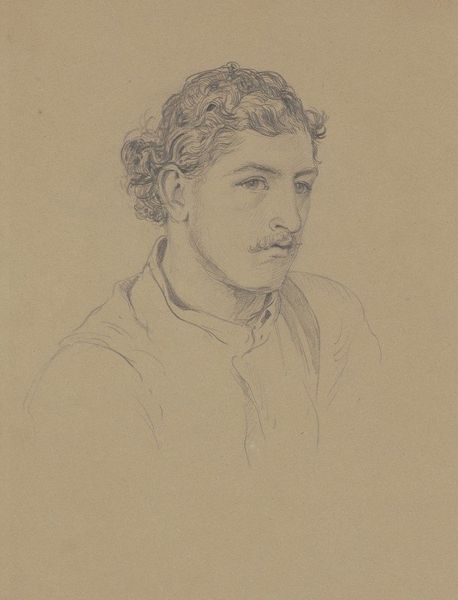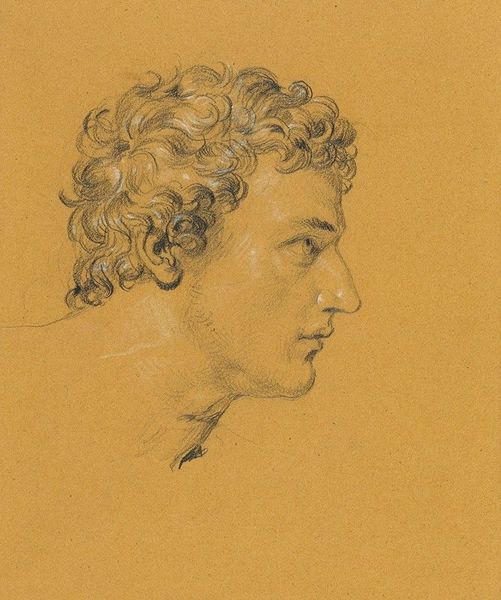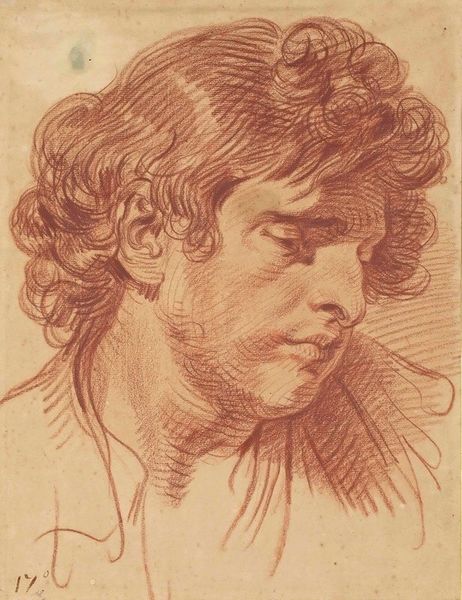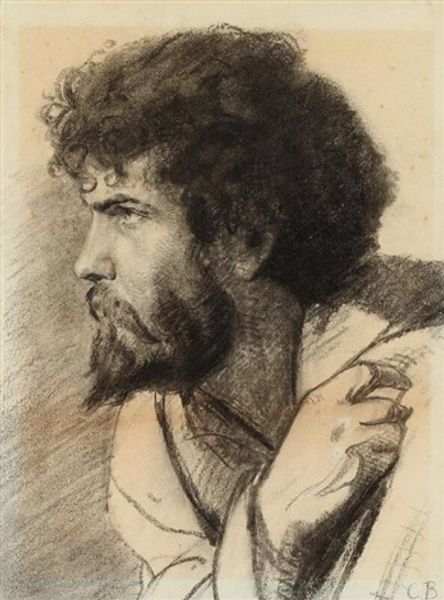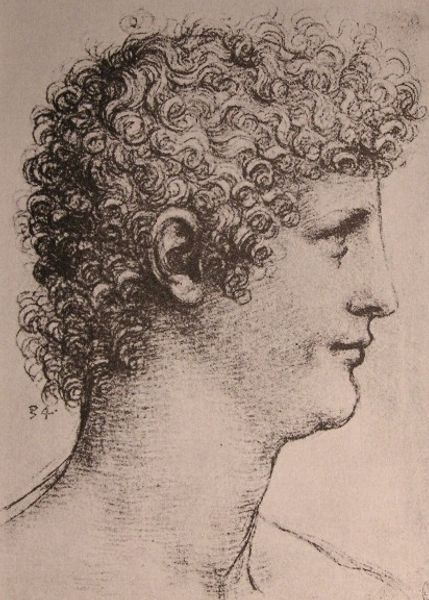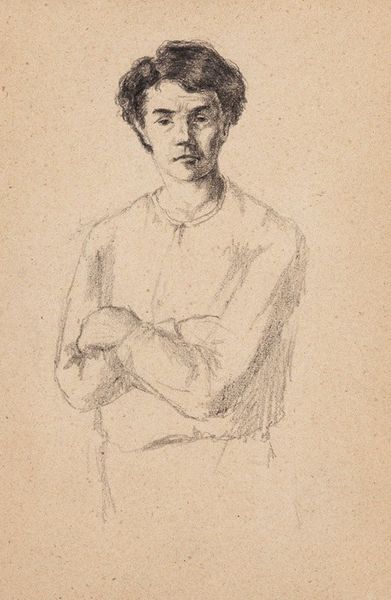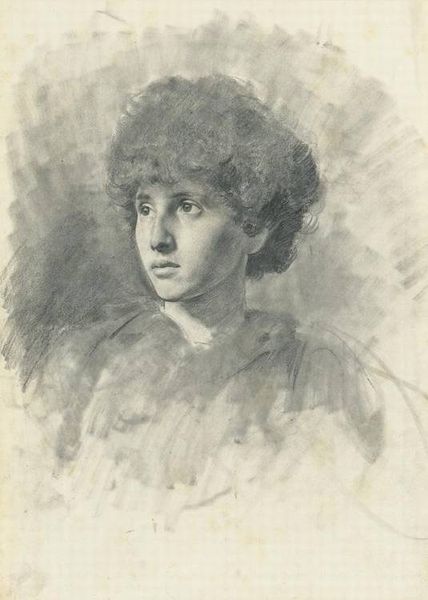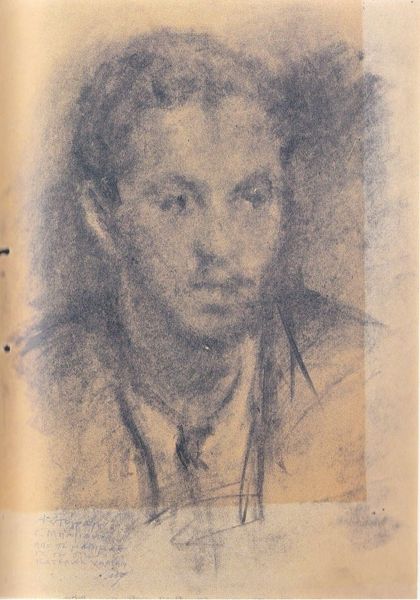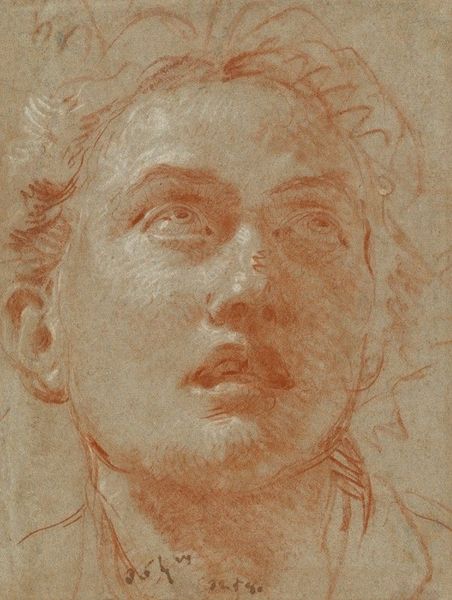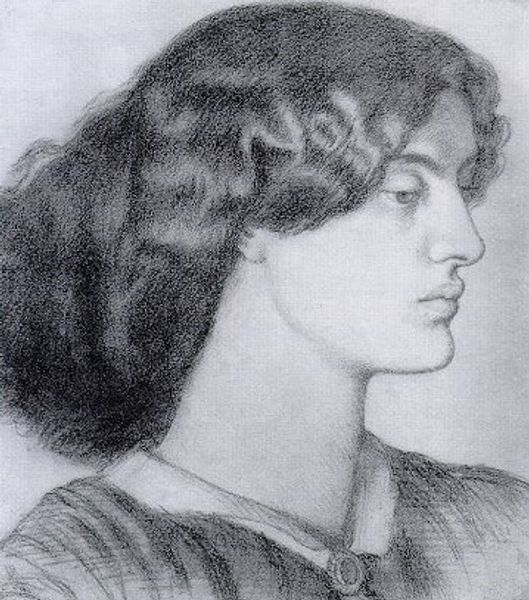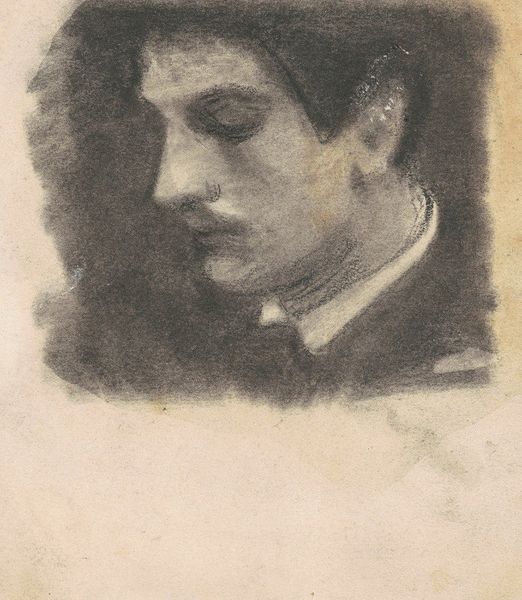
Copyright: Public domain
Curator: Up next we have "Self-portrait" by Mariano Fortuny Marsal, created in 1859. Editor: Wow, he looks about to launch into a Byronic soliloquy! Melancholy is practically radiating from those eyes. I wonder what's got him so down. Curator: Or perhaps contemplative? There is definitely a sense of Romanticism in the image. A yearning gaze, characteristic of the era. Note the soft blending of the charcoal lines creating form, evoking a sensitive soul. Editor: Charcoal. Yes! And the light! Dramatic, chiaroscuro-esque… Makes him seem almost…staged? Like he's acting the role of the brooding artist. You know, practicing in a mirror or something. Curator: The gaze directs the viewer in a specific way, of course, which may enhance that feeling. What meaning might a self-portrait hold, when intended for an audience? Fortuny, who gained fame as a painter of historical and genre scenes, perhaps sought to position himself amongst a specific intellectual or emotional class. Editor: Hmmm, or maybe it's a raw moment of self-assessment, before the performance even begins! The sketch feels so immediate and personal, it suggests he's grappling with something real, wrestling with his own image of himself. What symbol does he reflect to his world? Does it match his truth? That intense shadow down his neck certainly hints at an internal darkness. Curator: An excellent observation! One that adds to the work's complex web of potential meaning. Light and darkness are essential to his practice and inform much more of the culture that shaped it. Editor: This portrait is whispering possibilities rather than shouting answers. And honestly, I think that's what I appreciate most about it. It invites us in. Curator: Indeed. It’s a dance of identity and representation, skillfully rendered in charcoal. Editor: Absolutely! It definitely gets my own internal art critic fired up.
Comments
No comments
Be the first to comment and join the conversation on the ultimate creative platform.
